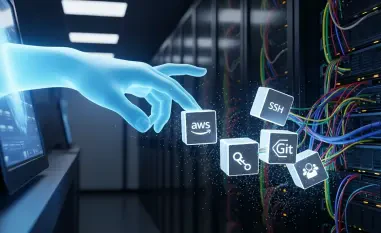Overview of a Pressing Cybersecurity Challenge
In an era where enterprise networks are the backbone of global business operations, a staggering statistic emerges: over 11 million attack attempts targeted Citrix NetScaler systems within a single month following a recent vulnerability disclosure. This alarming figure underscores a critical challenge facing organizations worldwide as zero-day flaws in Citrix NetScaler products, vital for secure application delivery and remote access, become a prime target for cybercriminals. The relentless exploitation of these systems raises urgent questions about the security of critical infrastructure and the readiness of enterprises to combat sophisticated threats in an increasingly hybrid and cloud-driven landscape.
The focus of this industry report is to dissect the escalating threat posed by zero-day vulnerabilities in Citrix NetScaler, a cornerstone of enterprise networking. By examining recent exploits, systemic challenges, and regulatory implications, this analysis aims to provide a comprehensive view of the risks and necessary countermeasures. As businesses depend more heavily on such technologies, understanding these vulnerabilities becomes paramount to safeguarding sensitive data and maintaining operational continuity.
This report navigates through the intricate landscape of Citrix NetScaler’s role in modern IT environments, the surge in targeted attacks, and the broader implications for cybersecurity. With insights into exploitation trends, data on attack severity, and forecasts for future risks, the discussion seeks to equip industry stakeholders with actionable knowledge. The urgency to address these flaws cannot be overstated, as the intersection of technology reliance and cybercrime continues to evolve at a rapid pace.
Understanding Citrix NetScaler and Its Critical Role
Citrix NetScaler, encompassing products like NetScaler ADC and NetScaler Gateway, stands as a linchpin in enterprise networking by facilitating load balancing, application delivery, and secure remote access. These solutions optimize traffic distribution across servers while ensuring robust security for applications and data, making them indispensable for organizations managing complex IT infrastructures. Their ability to enhance performance and protect against threats has cemented their position as a trusted choice in diverse sectors, from finance to healthcare.
The widespread adoption of NetScaler products highlights their significance, with thousands of enterprises relying on them to support mission-critical operations. Positioned in the competitive application delivery controller market alongside players like F5 Networks and Radware, Citrix distinguishes itself through seamless integration with hybrid and cloud environments. This adaptability addresses the growing demand for flexible, scalable solutions as businesses transition to distributed architectures, amplifying NetScaler’s strategic importance.
Technologically, NetScaler systems are pivotal in enabling secure, high-performance application access in an era of digital transformation. Their role in safeguarding remote workforces and optimizing cloud-based services underscores a broader trend of reliance on advanced networking tools. As enterprises navigate the complexities of modern IT, the centrality of such systems in maintaining operational resilience and security becomes increasingly evident, setting the stage for understanding the risks they face.
The Rise of Zero-Day Vulnerabilities in Citrix NetScaler
Emerging Threats and Exploitation Trends
A troubling wave of zero-day vulnerabilities has recently targeted Citrix NetScaler, with notable flaws such as CVE-2025-7775, CVE-2025-7776, and CVE-2025-8424 exposing systems to severe risks. These vulnerabilities, actively exploited by cybercriminals, enable devastating outcomes like remote code execution and denial-of-service disruptions, posing immediate threats to organizational security. The sophistication of these attacks reflects a calculated effort by adversaries to exploit critical infrastructure for maximum impact.
Ransomware gangs and advanced persistent threat groups have been quick to capitalize on these weaknesses, often deploying backdoors to maintain long-term access to compromised systems. Cybersecurity experts have observed a recurring pattern of targeting Citrix products, a trend evident in the frequent inclusion of NetScaler flaws in the Cybersecurity and Infrastructure Security Agency’s catalog of known exploited vulnerabilities. Such consistent attention from threat actors signals a deliberate focus on exploiting gaps in widely used software.
Insights from industry leaders emphasize the tactical evolution of attackers, who leverage these flaws for systemic compromise beyond mere data theft. The consensus points to a growing arsenal of methods designed to bypass traditional defenses, highlighting the urgency for organizations to anticipate and counter these sophisticated approaches. As exploitation tactics advance, the need for heightened vigilance and adaptive security measures becomes a pressing priority for NetScaler users.
Scale and Impact of Recent Attacks
The severity of recent Citrix NetScaler vulnerabilities is starkly illustrated by CVSS ratings, with CVE-2025-7775 scoring a critical 9.2, indicative of its potential for catastrophic damage. Historical data further paints a grim picture, as seen in the aftermath of CVE-2025-5777, which triggered over 11 million attack attempts across thousands of sites in just one month. Such figures underscore the massive scale at which adversaries target these systems, exploiting their centrality in enterprise environments.
Current vulnerabilities like CVE-2025-7775 present a comparable risk, with the potential for widespread exploitation threatening countless organizations globally. The immediate fallout includes compromised networks, disrupted services, and significant financial losses, particularly for entities slow to respond. This situation amplifies the stakes for businesses that rely on NetScaler for secure operations, as delays in mitigation can lead to irreparable harm.
Looking ahead, trends suggest that attacker interest in critical software like NetScaler will not wane, driven by the high value of successful exploits. The likelihood of continued assaults remains elevated, especially as cybercriminals refine their strategies to exploit even minor lapses. Organizations must brace for an ongoing battle, recognizing that the current wave of attacks may be a precursor to even more aggressive campaigns targeting unpatched or outdated systems.
Challenges in Securing Citrix NetScaler Systems
The task of securing Citrix NetScaler systems is fraught with obstacles, chief among them being the persistence of outdated, end-of-life versions like 12.1 and 13.0. These legacy systems, no longer eligible for security updates, represent a significant vulnerability, leaving organizations exposed to known and emerging threats. The inability to patch such versions creates a persistent gap in defenses that attackers are eager to exploit.
Industry data reveals a concerning reality: approximately 20% of NetScaler assets operate on unsupported versions, a statistic described by experts as a ticking time bomb. This prevalence of obsolete software amplifies the risk, as cybercriminals prioritize these easy targets for their lack of protective updates. The challenge lies not only in identifying these systems but also in navigating the logistical and financial hurdles of upgrading to supported configurations.
Mitigation strategies extend beyond mere updates, requiring comprehensive audits to detect lingering backdoors or compromises from prior attacks. Proactive measures, such as implementing network segmentation and continuous monitoring, are essential to bolster defenses against exploitation. Enterprises must adopt a multi-layered approach, combining timely upgrades with rigorous security practices to address the inherent risks of maintaining critical systems in a threat-laden environment.
Regulatory and Compliance Implications
The regulatory landscape surrounding cybersecurity for critical software like Citrix NetScaler is increasingly stringent, with agencies like CISA playing a pivotal role in tracking and publicizing exploited vulnerabilities. Their catalog serves as a vital resource for organizations, mandating swift action to address known flaws and align with federal guidelines. Compliance with such directives is not just a legal obligation but a benchmark for maintaining operational integrity.
Recurring security issues in NetScaler products have broader implications for organizational trust and accountability, as stakeholders demand transparency in addressing vulnerabilities. Failure to meet compliance standards can erode confidence among customers and partners, while also inviting scrutiny from regulators. This dynamic places pressure on enterprises to prioritize cybersecurity as a core component of their governance frameworks.
Regulatory mandates, including requirements for timely patching and incident reporting, shape how Citrix and its customers respond to zero-day threats. These obligations compel faster disclosure and remediation efforts, fostering a culture of accountability within the industry. As oversight intensifies, organizations must integrate compliance into their security strategies, ensuring that adherence to standards fortifies their defenses against evolving cyber risks.
Future Outlook for Citrix NetScaler Security
The horizon for Citrix NetScaler security appears fraught with challenges as emerging attack methods grow in complexity, potentially outpacing current defenses. The likelihood of more sophisticated exploits looms large, with adversaries continually seeking novel ways to penetrate critical systems. This evolving threat landscape demands that Citrix and its user base remain agile, anticipating vulnerabilities before they can be weaponized.
Criticism from cybersecurity experts points to a need for innovation in NetScaler’s defense mechanisms, particularly in preventing trivial flaws from leading to total system compromise. Such lapses, deemed unacceptable in critical software, highlight gaps that must be addressed through enhanced design and preemptive security features. Strengthening these areas could significantly reduce the attack surface and restore confidence in the platform’s resilience.
Global cybersecurity trends and organizational adoption of proactive measures will likely influence the trajectory of NetScaler’s threat environment. As businesses invest in advanced threat detection and response capabilities, the collective ability to counter exploits may improve. However, this progress hinges on collaboration between vendors, enterprises, and regulators to address systemic weaknesses, ensuring that NetScaler remains a secure cornerstone of enterprise networking amid rising cyber hostilities.
Final Reflections and Path Forward
Looking back, the examination of Citrix NetScaler zero-day vulnerabilities revealed a persistent and escalating threat to enterprise security, driven by active exploitation and systemic challenges. The severity of flaws like CVE-2025-7775, coupled with the alarming prevalence of unsupported systems, painted a stark picture of risk that demanded immediate attention. The regulatory pressures and evolving attack tactics further compounded the urgency for robust countermeasures.
Moving forward, organizations need to prioritize actionable steps, such as accelerating patch deployment and conducting thorough system audits to unearth hidden compromises. Upgrading to supported versions stands as a non-negotiable measure to eliminate vulnerabilities inherent in outdated software. Beyond technical fixes, fostering a culture of proactive security through staff training and cross-industry collaboration emerges as a vital strategy to enhance resilience.
The path ahead also calls for Citrix to innovate relentlessly, addressing expert critiques by fortifying defenses against even minor flaws. Industry-wide efforts to share threat intelligence and develop standardized responses promise to mitigate future risks. By embracing these initiatives, enterprises and vendors alike can transform the challenge of zero-day threats into an opportunity to build a more secure digital ecosystem.













